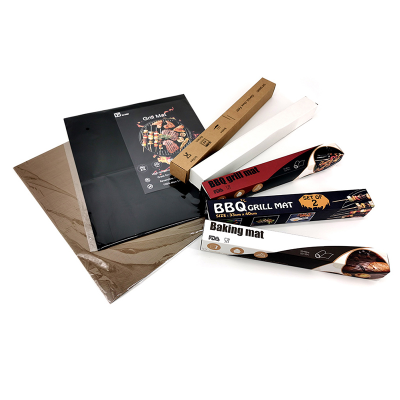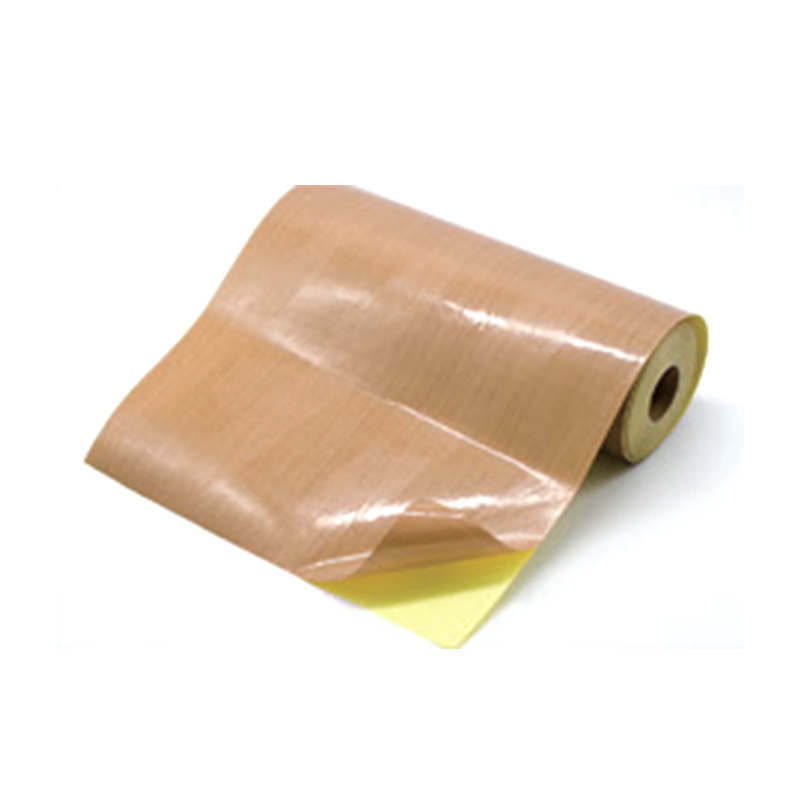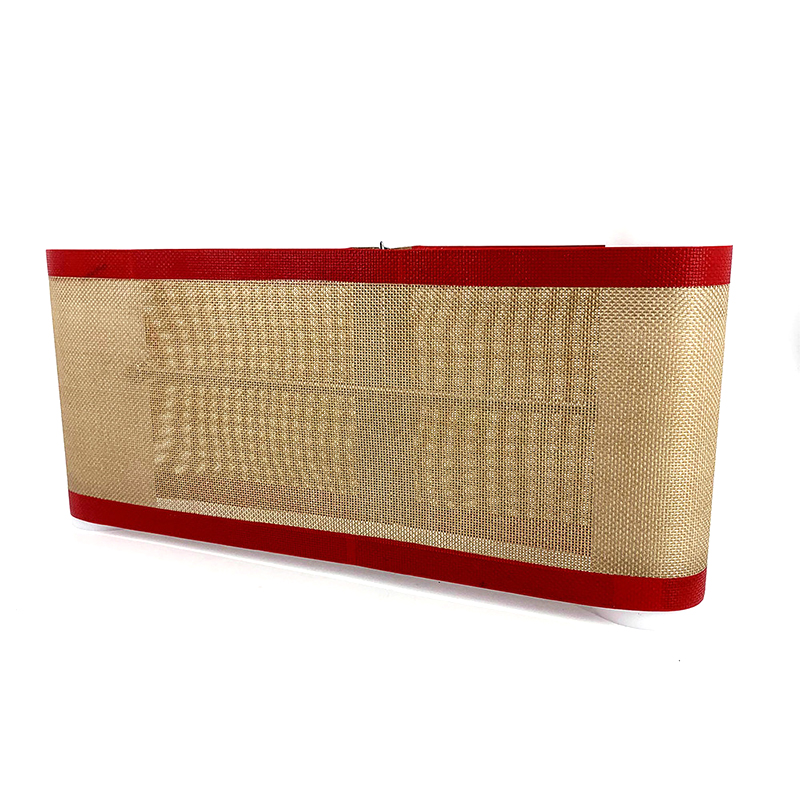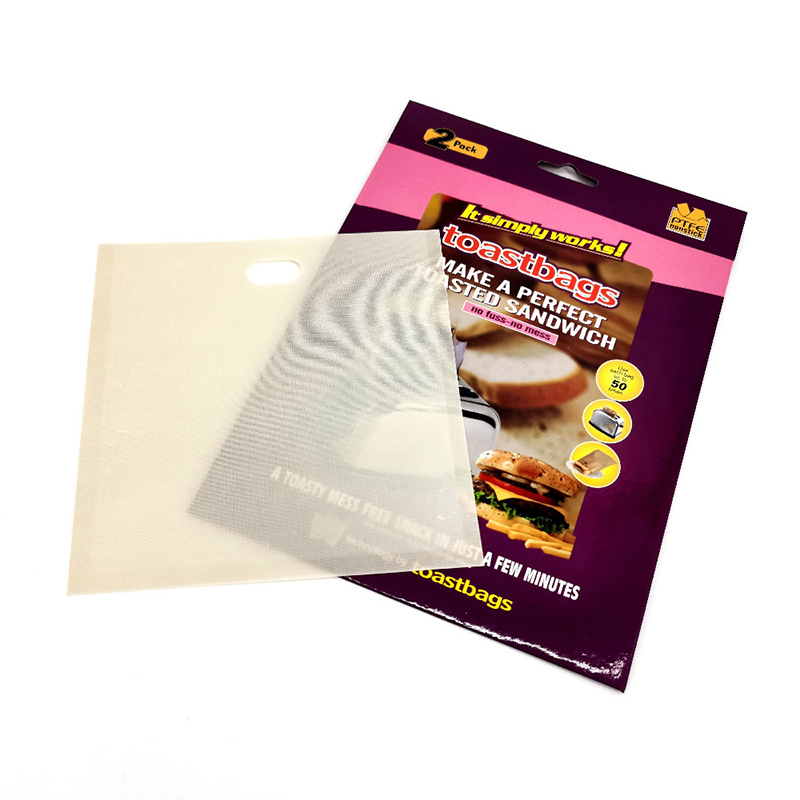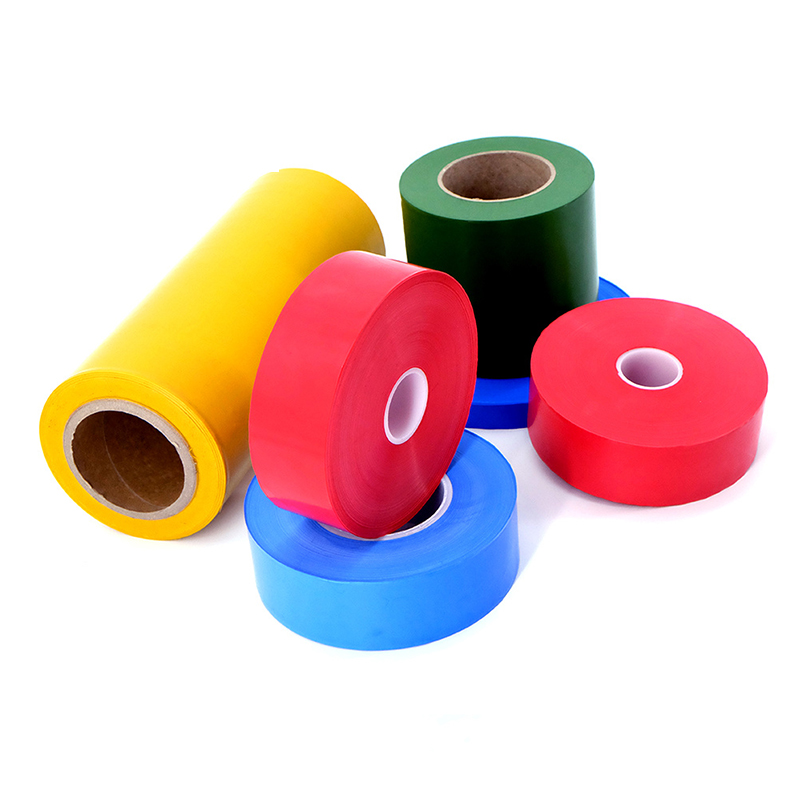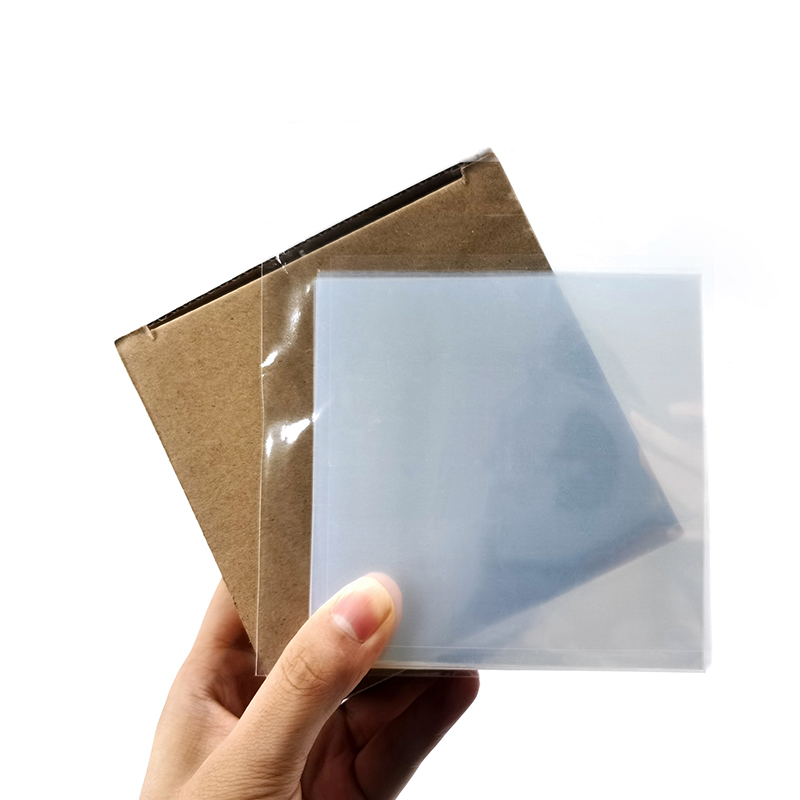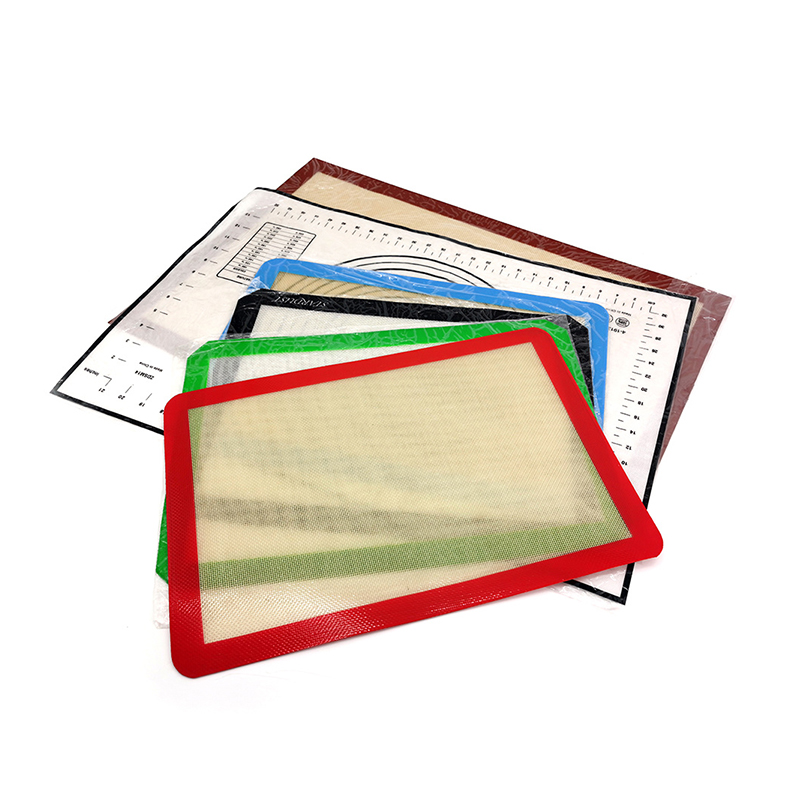PTFE Conveyor Belts: The Ultimate Guide to Properties, Applications, and Benefits
In the world of industrial manufacturing and processing, the choice of conveyor belt material is a critical decision that directly impacts efficiency, product quality, and operational costs. Among the various high-performance options available, PTFE conveyor belts stand out as a superior solution for the most demanding applications. Made from Polytetrafluoroethylene, a synthetic fluoropolymer renowned for its exceptional properties, these belts are engineered to handle extreme conditions that would quickly degrade conventional materials. This comprehensive guide delves deep into the unique characteristics of PTFE conveyor belts, explores their vast range of industrial applications, and outlines the significant benefits they offer. Whether you are involved in food processing, textile manufacturing, or composite curing, understanding the capabilities of PTFE-coated conveyor belting is essential for optimizing your production line and overcoming challenges related to heat, adhesion, and chemical resistance.
What are PTFE Conveyor Belts? Understanding the Material Science
PTFE, or Polytetrafluoroethylene, is the cornerstone material that gives these conveyor belts their remarkable capabilities. Discovered in the 1930s, PTFE is characterized by a uniquely strong carbon-fluorine molecular bond, which is the secret behind its legendary performance. A PTFE conveyor belt is typically constructed by coating a fine glass fiber mesh with multiple layers of PTFE, creating a composite material that leverages the strength of the fiberglass and the surface properties of the non-stick polymer. This combination results in a belt that is not only incredibly durable and dimensionally stable under tension and heat but also possesses a non-porous, inert surface. The manufacturing process involves sintering the coated fabric at high temperatures, which fuses the PTFE layers into a continuous, impermeable membrane. This intricate process ensures the final product can withstand continuous operating temperatures up to 550°F (288°C) and intermittent exposure to even higher heats, making it an indispensable asset in high-temperature industrial settings.
- Molecular Structure: The carbon-fluorine bond is one of the strongest in organic chemistry, providing incredible stability and resistance.
- Base Substrate: The fiberglass core offers high tensile strength and minimal longitudinal stretch, ensuring consistent tracking.
- Coating Process: Multiple layers of PTFE are applied and sintered to create a seamless, non-porous surface.
- Material Inertness: PTFE is completely inert to almost all industrial chemicals and solvents, preventing degradation.
- Temperature Threshold: The defining feature, allowing for use in processes like curing, drying, and sintering where other belts fail.
Key Properties and Advantages of PTFE Coated Conveyor Belts
The exceptional properties of PTFE translate directly into tangible advantages on the production floor. The most celebrated feature is its unparalleled non-stick characteristic, often compared to a "non-stick frying pan" but for industrial use. This property ensures that even the stickiest materials—such as melted cheese, hot-melt adhesives, uncured rubber, or resin-coated fabrics—release cleanly from the belt surface without leaving residue. This eliminates product waste, reduces downtime for cleaning, and maintains consistent product quality. Furthermore, PTFE conveyor belts exhibit outstanding thermal stability, maintaining their structural integrity and performance across a vast temperature range from -100°F to +550°F (-73°C to +288°C). They are also inherently flame-retardant and self-extinguishing, adding a layer of safety to high-heat operations. Their excellent dielectric properties make them ideal for applications involving radio-frequency (RF) heating or sealing processes. Perhaps equally important is their chemical inertness; they are completely resistant to attack by almost all acids, bases, and solvents, ensuring a long service life even in harsh chemical environments.
- Superior Non-Stick Surface: Prevents adhesion of sticky materials, reducing waste and cleaning stops.
- Exceptional High-Temp Resistance: Operates continuously at temperatures where PVC or rubber belts would melt.
- Excellent Chemical Resistance: Withstands corrosive chemicals, oils, and solvents without breaking down.
- Low Coefficient of Friction: Allows for smooth product transfer and reduces drive power requirements.
- High Dielectric Strength: Suitable for processes involving RF or microwave energy.
- Flexibility and Durability: The fiberglass base provides strength and tear resistance while allowing flexibility.
Comparing PTFE with Other Common Conveyor Belt Materials
Selecting the right belt material often involves a careful comparison of properties, costs, and suitability for the specific application. While materials like silicone, PVC, and rubber have their places in industry, PTFE offers a unique combination of properties that makes it the only choice for extreme conditions. Silicone belts also offer good non-stick and high-temperature properties, but they generally have a lower maximum continuous operating temperature (around 400°F/204°C) compared to PTFE. Silicone can also be more susceptible to certain oils and solvents. PVC and rubber belts are cost-effective for general-purpose use but fail miserably in high-heat or non-stick applications, as they can melt, degrade, or become sticky themselves. The following table provides a clear, at-a-glance comparison to help in the material selection process.
| Property | PTFE | Silicone | PVC | Rubber |
| Max Continuous Temp | 550°F (288°C) | 400°F (204°C) | 150°F (65°C) | 200°F (93°C) |
| Non-Stick Performance | Excellent | Very Good | Poor | Poor |
| Chemical Resistance | Excellent | Good | Fair | Fair to Good |
| Flexibility | Good | Excellent | Excellent | Excellent |
| Cost | Higher | Medium-High | Low | Low-Medium |
Top 5 Industries Revolutionized by PTFE Conveyor Belts
The unique properties of PTFE-coated conveyor belting have made them a transformative technology across a diverse range of sectors. Their ability to solve persistent problems like product sticking, contamination, and heat degradation has revolutionized production processes. In the food processing industry, for example, they are the backbone of applications involving high-temperature baking, drying, freezing, and cooling. They enable the perfect release of sticky pastry, bread, candy, and frozen foods without the need for excessive oils or release agents, ensuring a cleaner and healthier product. Beyond food, the textile industry relies heavily on these belts for fabric finishing processes such as heat-setting, dye fixation, and laminating, where consistent heat transfer and non-marking surfaces are paramount. The production of composites and plastics, including PTFE and fiberglass materials themselves, often involves curing ovens where only PTFE belts can survive the extreme heat and prevent uncured resin from adhering to the surface.
- Food Processing: Baking, drying, freezing, and cooling of sticky foods like pizzas, cookies, and candies.
- Textile Manufacturing: Heat-setting, dyeing, drying, and laminating processes for fabrics and nonwovens.
- Composites & Plastics: Curing and sintering of fiberglass, PTFE, and other composite materials.
- Printing & Packaging: Digital printing, UV curing, and hot-melt adhesive applications.
- Automotive and Aerospace: Curing of adhesives and coatings on parts and components.
Solving Extreme Heat & Sticky Challenges with PTFE Belts
For engineers and plant managers, production bottlenecks caused by material sticking to conveyor belts or belt failure under high heat are constant sources of frustration and expense. These challenges lead to significant downtime for scraping and cleaning, product deformation and waste, and frequent belt replacement. A PTFE conveyor belt is specifically engineered to be the definitive solution to these problems. The non-stick nature of PTFE is not a coating that can wear off; it is the intrinsic property of the entire belt surface. This means it provides a consistent, reliable release surface for the entire lifespan of the belt, even under relentless thermal and mechanical stress. For operations involving ovens, dryers, or freezers, the belt acts not just as a transport medium but as a critical component of the thermal processing system, capable of withstanding the harsh internal environment without degrading, cracking, or releasing harmful fumes. This capability to handle extreme heat conveyor solutions is why they are specified for the most punishing applications.
- Eliminates Product Residue: Sticky substances release completely, preventing build-up and cross-contamination.
- Reduces Downtime: Eliminates daily scraping and aggressive cleaning, increasing production uptime.
- Improves Product Quality: Prevents tearing, marking, or deformation of delicate products during transfer.
- Enhances Process Efficiency: Consistent performance in high-heat environments ensures predictable process outcomes.
- Lowers Total Cost of Ownership: While the initial investment is higher, the long service life and reduced maintenance lead to savings.
How to Choose the Right PTFE Belt for High-Temperature Processes
Selecting the optimal PTFE conveyor belt for a specific high-temperature process requires careful consideration of several technical parameters beyond just the maximum temperature. The first step is to accurately define the process conditions, including the continuous operating temperature, peak temperature during cleaning cycles, and the type of heat transfer (radiant, convective, or conductive). Next, the mechanical requirements must be assessed: the total load on the belt, the tension required for tracking, and the type of splice needed (e.g., endless spliced, clipper hook, or butt-joined). The physical and chemical properties of the product being conveyed are equally critical; a sharp or abrasive material might require a heavier coating or a specific weave style of the fiberglass substrate to prevent premature wear. Finally, belt dimensions—width, length, and thickness—must be specified to ensure compatibility with existing conveyor machinery.
- Process Temperature Profile: Define both continuous and peak exposure temperatures.
- Mechanical Load and Tension: Calculate the total weight and required tensile strength.
- Product Characteristics: Consider abrasiveness, stickiness, and weight of the items being conveyed.
- Belt Construction: Choose the appropriate yarn count, weave pattern, and PTFE coating thickness.
- Splicing Method: Select a splice type that can withstand the process heat and tension.
Maintenance, Cleaning, and Longevity of PTFE Mesh Belts
While renowned for their durability and low-maintenance nature, PTFE mesh conveyor belts still require proper care to maximize their service life and performance. The good news is that their non-stick and chemical-resistant properties make cleaning a relatively straightforward task. For daily maintenance, a simple wipe-down with a clean, dry cloth is often sufficient to remove light dust or debris. For more persistent residue, a soft brush can be used. If a wet cleaning is necessary, warm water with a mild detergent is usually adequate. It is crucial to avoid using abrasive scrubbers or harsh, corrosive chemicals that could physically damage the surface or degrade the fiberglass core over time. Regular inspection is key to longevity; operators should periodically check for signs of wear, such as fraying edges, broken threads, or cuts. Proper tracking adjustment is also vital, as misalignment can cause excessive wear on the belt edges and the conveyor frame. By following these simple steps, a PTFE belt can provide many years of reliable service, offering an excellent return on investment.
- Daily Cleaning: Use a dry cloth or soft brush to remove debris.
- Deep Cleaning: Use warm, soapy water and a non-abrasive sponge; rinse thoroughly.
- Avoid Harsh Chemicals: Steer clear of strong acids, bases, or abrasive cleaners.
- Regular Inspection: Check for edge wear, broken mesh threads, and splice integrity.
- Ensure Proper Tracking: Adjust guides and tension to prevent off-center running and edge damage.
- Proper Storage: If storing a spare belt, keep it in a cool, dry place away from direct sunlight.
FAQ
What is the maximum temperature a PTFE conveyor belt can handle?
PTFE conveyor belts are renowned for their exceptional high-temperature resistance. The maximum continuous operating temperature for a standard PTFE conveyor belt is typically 550°F (288°C). Some specialized formulations or constructions can withstand short-term, intermittent exposure to temperatures as high as 600°F (316°C). This makes them vastly superior to silicone, rubber, or PVC belts for applications like industrial baking, composite curing, and textile heat-setting. It is always recommended to consult with the belt manufacturer to confirm the exact temperature rating for a specific belt model and application.
How do I clean a sticky residue from my PTFE belt?
Thanks to its non-stick properties, cleaning a PTFE belt is generally easier than cleaning other surfaces. For most sticky residues, the first step is to gently scrape off any excess material while it is still warm, if possible. Then, allow the belt to cool completely. Often, the residue will become brittle and can be brushed off. For more tenacious buildup, wiping the belt with a cloth dampened with a mild detergent solution or a recommended solvent like isopropyl alcohol can be effective. It is critical to avoid abrasive pads or harsh, corrosive chemicals like acetone or strong acids, as these can microscopically damage the PTFE surface and eventually compromise its non-stick properties. Always rinse thoroughly with water after cleaning with any chemical.
Can PTFE conveyor belts be spliced and repaired?
Yes, PTFE conveyor belts can be spliced and repaired, which is a significant advantage for minimizing downtime. The most common and reliable method is thermal welding, which uses heat and pressure to fuse the two belt ends together, creating a strong, seamless, and often invisible joint that retains the belt's flexibility and non-stick properties across the splice. Other methods include using stainless steel clipper hooks or lacing, though these mechanical splices may be slightly visible and can sometimes snag very delicate products. For minor repairs like small cuts or holes, PTFE-coated repair patches are available that can be thermally bonded to the damaged area. It is highly recommended that splicing and major repairs be performed by trained professionals to ensure integrity.
What is the difference between PTFE-coated and silicone-coated belts?
The primary differences between PTFE-coated and silicone-coated belts lie in their temperature resistance, chemical resistance, and non-stick performance. PTFE conveyor belts generally offer a higher maximum continuous operating temperature (550°F vs. ~400°F for silicone) and superior resistance to a wider range of chemicals, especially solvents. PTFE also has a lower coefficient of friction, meaning it is more non-stick than silicone. Silicone belts, on the other hand, are often more flexible and can be better suited for applications requiring very tight turning radii. They may also be a cost-effective option for processes that operate within their lower temperature limits and do not require the ultimate in non-stick performance.
How long does a typical PTFE conveyor belt last?
The service life of a PTFE conveyor belt is not defined by a fixed timeframe but rather by the application's operating conditions. Under normal conditions with proper care and maintenance, a high-quality PTFE belt can last anywhere from 1 to 5 years or even longer. Factors that significantly influence lifespan include the operating temperature, the abrasiveness and weight of the conveyed product, the tension the belt is under, the accuracy of conveyor tracking, and the cleanliness of the system. A belt in a high-heat, high-abrasion environment will naturally have a shorter life than one in a moderate, clean process. Proper selection, installation, and maintenance are the key drivers for maximizing longevity.



 English
English Español
Español русский
русский
